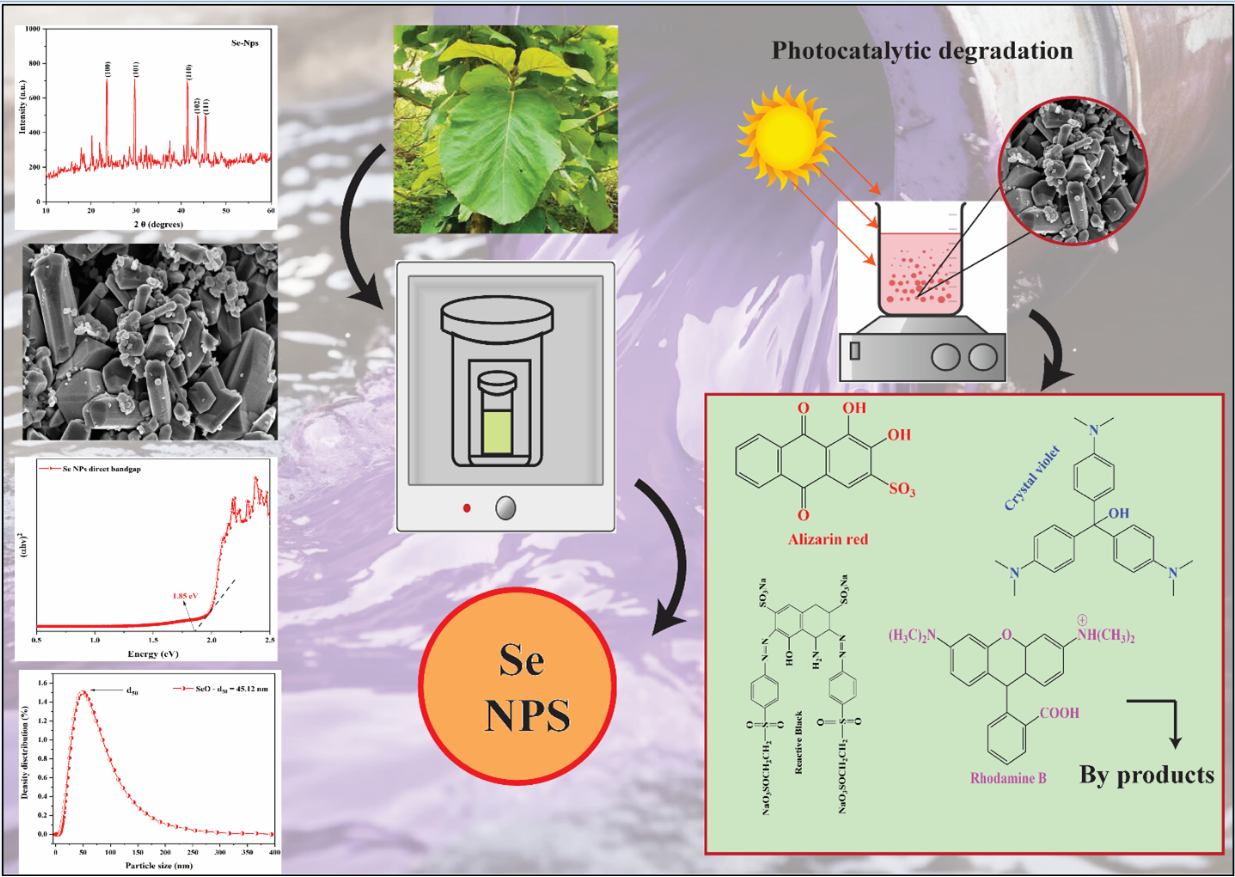
This study synthesizes selenium nanoparticles (Se NPs) using a green approach, utilizing Tectona grandis leaf extract in a hydrothermal method. The X-ray diffraction (XRD) analysis provided highly crystalline particles with a trigonal crystal structure, indicative of the well-defined nature of the synthesized Se NPs. Particle size analysis (PSA) results demonstrated a average particle size of 45 nm, further supporting the nano-sized characteristics of the particles. Field emission scanning electron microscopy (FESEM) results exhibited a hexagonal close-packed structure, providing valuable insights into the morphology of the Se NPs. Optical band gap calculations using the Tauc plot method yielded a value of 1.85 eV, highlighting the semiconductor nature of the synthesized Se NPs. The photocatalytic application of these nanoparticles was investigated against various cationic and anionic dyes, including Alizarin Red, Crystal Violet, Reactive Black, and Rhodamine B, under sunlight irradiation. Notably, the Se NPs demonstrated enhanced degradation, particularly for cationic dyes, attributed to electrostatic surface charge interactions. Rhodamine B exhibited the highest degradation efficiency among the dyes, reaching 96%. Furthermore, the stability of the Se NPs was evaluated through five consecutive cycles of photocatalytic degradation. Remarkably, the nanoparticles maintained stability, with only a marginal loss in degradation efficiency (after 5 cycles), affirming their potential as a stable and efficient nano photocatalyst for environmental remediation applications. This comprehensive investigation underscores the significance of green-synthesized Se NPs in advancing sustainable and effective photocatalytic processes.
Total file downloads: 20